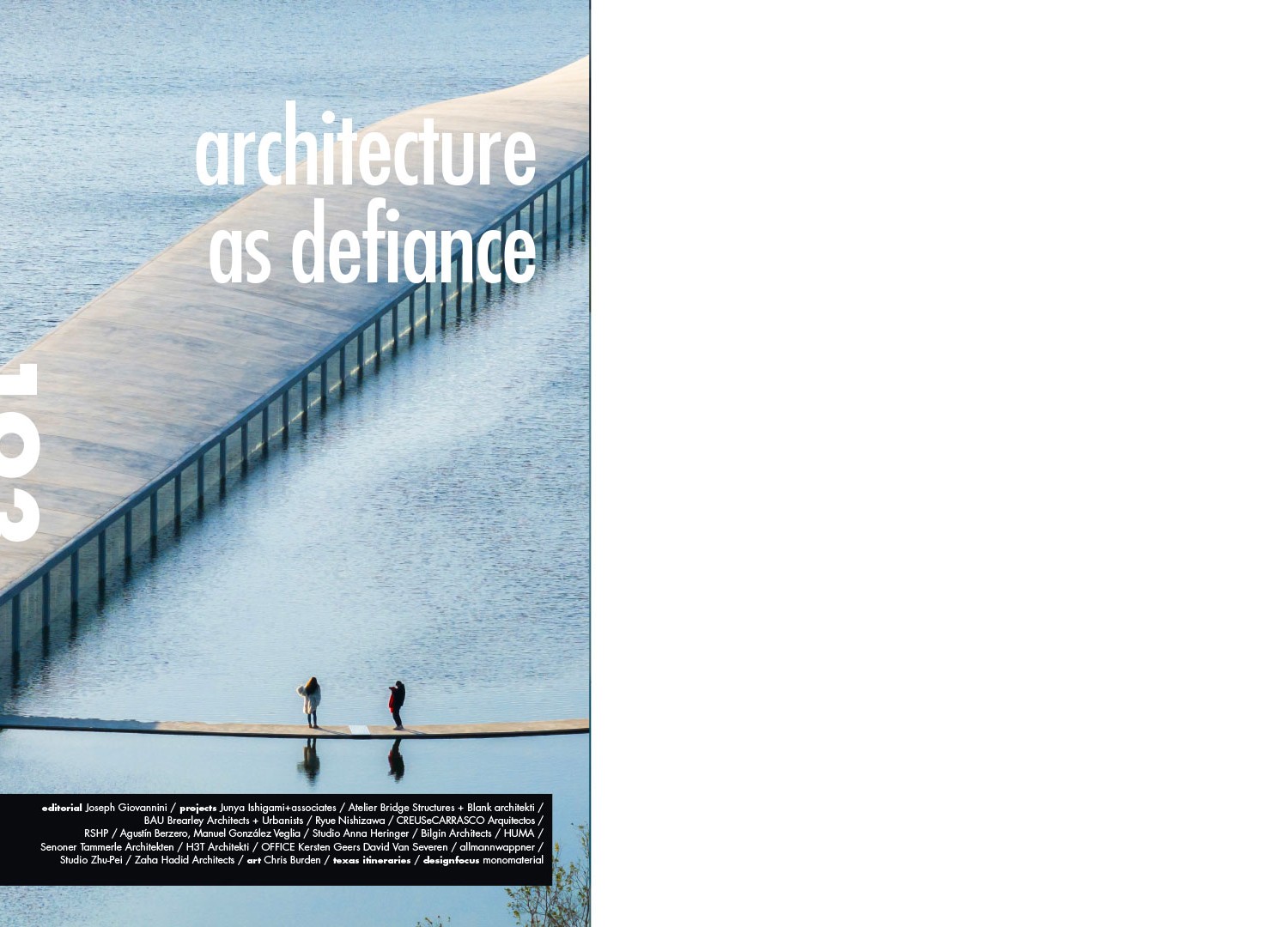
Architecture, as a discipline and as completed work, is constantly forced to deal with the construction technology, an essential tool for the production of the habitable spaces the architect imagines so perfectly in thought. Sometimes, technical processes and new materials have even been able to liberate that imagination or suggest new expressive opportunities serving toward the development of a narrative that is, in any case, the result of the author’s own research. The idea of reflecting on the subject of “Architecture as Challenge”, takes up the theme of an exhibition organized by the MAXXI museum in 2010, on the subject of Pier Luigi Nervi and his work, with the intention, in that case, however, of understanding how the final aim of the project changes over time as it opens up to new conditions and complexities in response to the needs of contemporary living. The challenges that the project has encountered through the centuries are always different, of course, and while for the curators of that exhibition – Tullia Ioli and Sergio Poretti – the idea was to narrate the visions of an engineer who succeeded in bringing together art and science, imagination and exceptional technical skill, it is important to stress that those aims have tended to change in time, passing through the rigor of the Renaissance, the drama of Baroque, the esthetic and functional pragmatism of Modern architecture. The essay by Joseph Giovannini that precedes the selection of projects presented, reflecting on the history of the arts in the past century, illustrates how architecture has occasionally taken a turn into a condition of “constructive irrationality”, attempting innovative solutions on the edge of impossibility. It is as if the goal of the project challenge were focused on finding the most shocking, amazing, exceptional structure conceivable, introduced by a thinking targeted on the de-construction of the work to be achieved, without regard to any ethical or economic consideration. Certainly, in our own time, architecture has had to deal with different challenges and reflect on issues that cannot fail to take account of the social, environmental, climatic and demographic changes that condition life at the global level, imposing efforts and studies focused now more on the interpretation and valorization of diversity and of identities oppressed by a general condition of standardization of lifestyle models. The research that has gone into technological innovation and the development of new materials, is now necessarily conditioned by considerations of energy savings in buildings in response to the problems connected with climate change and the consumption of finite resources, the first among these being the land itself. Likewise, on the formal plane, the most interesting studies concern those works that make safeguarding the cultural and expressive heritage of specific local communities at the center, with the integration of natural elements into the built environment. This holistic approach, which considers the social and environmental impact of the work a determinant of its ethical and esthetic dimension, reflects a vision of architecture that attempts to achieve a balance between nature, function and social responsibility, stressing the importance of a more informed and adaptive approach to contemporary architecture.
Download cover
Download table of contents
Download introduction of Marco Casamonti


